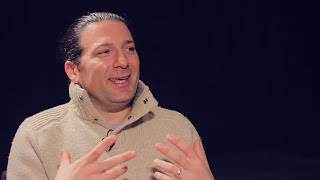Transcript:
Erik Michielsen: How do you balance experimentation and commitment in the projects that you pursue?
Joe Stump: I'm always experimenting. I think that’s a really important part of what I do in building products. I think it's really important to focus your experimentation and scratch those itches. I actually think that that increases focus because I look at new ideas. When I'm focused on a new product, a new company, I look at new ideas as, particularly ones that don’t apply to my new product.
Obviously, I'm always having new ideas about the product. I look at them as almost like cancerous because if I allow them to germinate -- I'm the type of person that like, “That's a pretty good idea,” and then I’ll ruminate on it for a little while and I'm like, “That’s a really good idea.” And then a little bit longer, then I’m like, and then I start checking out of the other one. So, experimentation allows me to kind of like satisfy my little need to explore that, and usually I’ll explore it just kind of enough to scratch the itch and then I can move on.
Erik Michielsen: Could you give me a couple of examples of projects or itches?
Joe Stump: A couple of things that I've done, I created -- for a long time, back in like 2001, 2002, I was doing a lot of consulting work and had a ton inbound email and IM from clients and stuff and email at the time, I mean, the very best email client out there was terrible, right? And I was like, “it would be really awesome if I could take all of my email and kind of index it by not just subject and body, but the attachments.”
There's a lot of really great data in emails. It's still the primary mechanism for sharing on the internet. There's a lot of URLs in there, a lot of photos, a lot of videos. Obviously your real social network is in your email at the large part. So I kind of like thought that was a cool idea and I had always wanted to do that and ended up actually scratching an itch over a weekend and built this thing where you could log in to Gmail and then it would index.
It was like a little internet crawler that would crawl through your email inbox and then would basically, you could do things like show me all the photos my mom sent me last week, show me all the PDFs that my lawyer sent me last month, show me all the Excel spreadsheets that I've gotten from my accountant. It took me three days to kind of hack that together and the proof of concept was awesome. I was showing it to people. I'm like, “Check this out,” and they're like, “That’s really cool,” because you could click on someone’s name and see all the attachments that they’ve sent them. You could click on a month and see all the attachments you got in a month. You could slice and dice in all sorts of different ways.
And basically I just scratched that itch and left it stagnating on GitHub for months and then met a guy who had just graduated with his masters in Natural Language Processing. And of course, email is like that guy’s wet dream, right? There's just gigabytes of text and he got really excited about it and he was like, “Can I hack on it with you?” and I was like, “Of course, it's just gathering dust on GitHub, fire away.” And that company went on. Those guys, he recruited in a friend, they went on to leave their jobs, helped them raise 500 K and by the time this video hits the internet, they’ll have closed theirs hearsay.
Erik Michielsen: What's the name of that company?
Joe Stump: Attachments.me, and it's pretty amazing now because they have taken it and completly ran with it and they’ve built it now and they're like this really crazy content router. So, you can literally say -- a lot of services send PDFs as receipts. GitHub is a good example. So they send an invoice once a month with the receipt as a PDF attachment. So now in Gmail, I can say, “Please route all PDF attachments from GitHub to my Dropbox GitHub receipts folder,” and it just happens automatically. You don’t have to do anything. It's really nice.





















